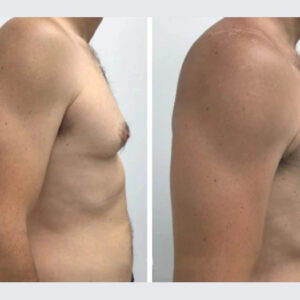Anti-embolism stockings, also known as compression stockings, play a vital role in both managing varicose veins and preventing deep vein thrombosis (DVT). These specialized medical garments are designed to apply graduated pressure to the legs, meaning the compression is strongest at the ankles and gradually decreases as it moves upward toward the knees or thighs. This strategic design supports the natural flow of blood back to the heart, helping to counteract the effects of gravity and prevent blood from pooling in the lower limbs. By doing so, these stockings not only enhance circulation but also significantly reduce the risk of developing dangerous clots or worsening vein-related issues.
Managing Varicose Veins
Varicose veins occur when the small, one-way valves inside the veins become weakened or damaged, allowing blood to flow backward and collect within the vein. Over time, this causes the vein to enlarge, twist, or bulge, often becoming visibly blue or purple. This condition is especially common in the legs and feet because these areas endure higher pressure when standing or walking for extended periods.
Common symptoms include:
- Aching or throbbing pain in the legs
- Noticeable swelling, especially at the end of the day
- A heavy or tired feeling in the legs
- Skin changes or irritation near the affected veins
Anti-embolism stockings are highly effective in managing these symptoms because their graduated compression supports the weakened vein walls and promotes upward blood flow. By gently squeezing the leg tissues, these stockings help minimize swelling, reduce discomfort, and relieve the feeling of heaviness. More importantly, they help prevent the pooling of blood that contributes to the worsening of varicose veins.
When used consistently especially for individuals with a family history of varicose veins, those who spend long hours standing, or people who sit for extended periods these stockings can slow disease progression and maintain overall vein health. For pregnant women, who are at increased risk due to hormonal changes and extra pressure on the veins, they can also provide much-needed relief and prevention.
Preventing Deep Vein Thrombosis (DVT)
Deep Vein Thrombosis is a serious vascular condition in which a blood clot (thrombus) forms in the deep veins of the legs. If this clot dislodges, it can travel through the bloodstream to the lungs, leading to a pulmonary embolism, which can be life-threatening.
Risk factors for DVT include:
- Prolonged immobility (bed rest, long flights, desk work)
- Major surgery, especially orthopedic procedures
- Certain medical conditions or clotting disorders
- Pregnancy and the postpartum period
- Advanced age or obesity
Anti-embolism stockings are crucial for both preventing and managing DVT. They encourage continuous circulation in the deep veins by reducing vein diameter and increasing blood flow velocity, making clot formation less likely. Hospitals often recommend or provide them to patients post-surgery or to those on extended bed rest to reduce the risk of complications.
They are also popular among frequent travelers, particularly those taking long-haul flights, since sitting for many hours can slow blood flow in the legs. Wearing compression stockings during such periods can significantly lower the risk of travel-related DVT, sometimes referred to as “economy class syndrome.”
Choosing the Right Anti-Embolism Stockings
Selecting the right stockings is critical to their success. They come in different:
- Lengths – knee-high, thigh-high, or full pantyhose style
- Compression levels – measured in millimeters of mercury (mmHg)
- Sizes – based on precise leg measurements
Lower compression levels (8–15 mmHg) are generally used for mild discomfort or light swelling, while moderate to higher levels (20–30 mmHg or more) are prescribed for more severe symptoms, post-surgical recovery, or advanced vein disease.
Proper measurement is essential. This typically involves measuring the circumference of the ankle, calf, and sometimes the thigh, as well as the length of the leg. Ill-fitting stockings can be counterproductive—too tight and they may restrict blood flow, too loose and they provide no benefit. Consulting a healthcare provider or trained fitter ensures you get the right compression strength and size for your condition.
Incorporating Anti-Embolism Stockings into Daily Life
To maximize their benefits, anti-embolism stockings must be worn correctly and consistently. Ideally, they should be put on first thing in the morning, before any swelling has developed, and kept on throughout the day. Removing them at night allows the legs to rest without compression while sleeping.
Care tips include:
- Hand-washing with mild detergent
- Air-drying away from direct heat sources
- Avoiding fabric softeners, which can damage elasticity
- Replacing them every 3–6 months for optimal performance
Pairing their use with healthy lifestyle habits can further enhance their effectiveness. This includes regular walking or leg exercises, leg elevation, staying hydrated, and avoiding long periods of sitting or standing without movement.
Conclusion
Anti-embolism stockings are a simple, non-invasive, and highly effective tool for promoting healthy circulation, preventing blood pooling, and reducing the risk of dangerous clots. Whether your goal is to manage varicose veins, prevent DVT after surgery, or stay protected during travel, these stockings can make a meaningful difference in your vascular health.
By consistently wearing properly fitted stockings and pairing them with a healthy lifestyle, you can protect your legs from both discomfort and serious medical complications.
For those seeking thigh high anti-embolism compression stockings, SNUG360 offers a variety of expertly designed options tailored to different needs. Crafted to enhance circulation, relieve symptoms, and support overall vein health, SNUG360’s stockings combine medical-grade effectiveness with everyday comfort. Discover the perfect fit and take a proactive step toward healthier, stronger legs with SNUG360’s trusted anti-embolism solutions.





